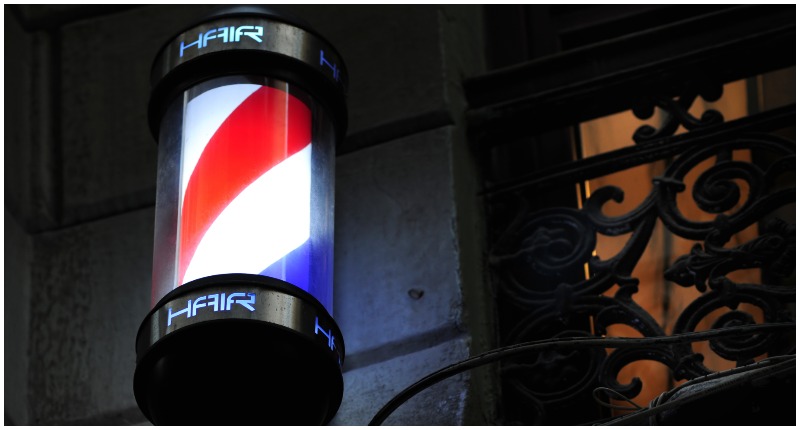Barbers have been a fixture in society for thousands of years. The ancient Egyptians were possibly the first civilization to regularly shave and trim their hair as part of a daily grooming routine. In fact, they were quite obsessed with personal hygiene.
Most men kept their heads, as well as their faces, neatly shaved. Priests went one step further, removing all hair on their bodies in the belief that it was shameful and unclean.
Barbers were held in high regard, and the most wealthy in society even kept a barber as part of their household staff. The would use a combination of razors and pumice stones to remove unwanted fuzz.
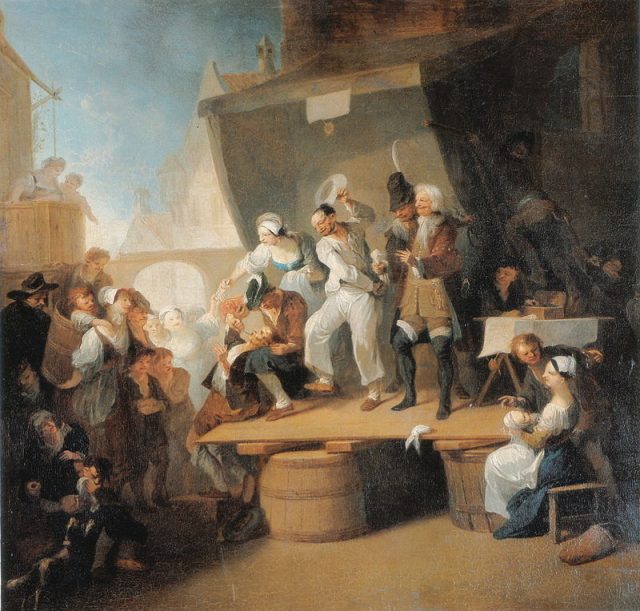
The ancient Greeks were fond of barbers as well and it is here that the first barber shops emerged, as places for men to go and have their hair trimmed and styled while they discussed matters of philosophy, politics, and current events.
Originally, the job of barbers in Greece was to care for the often extravagant and fantastic beards of the Greek men, but, during the campaigns of Alexander the Great against the Persians, it was found that beards were a detriment in battle.
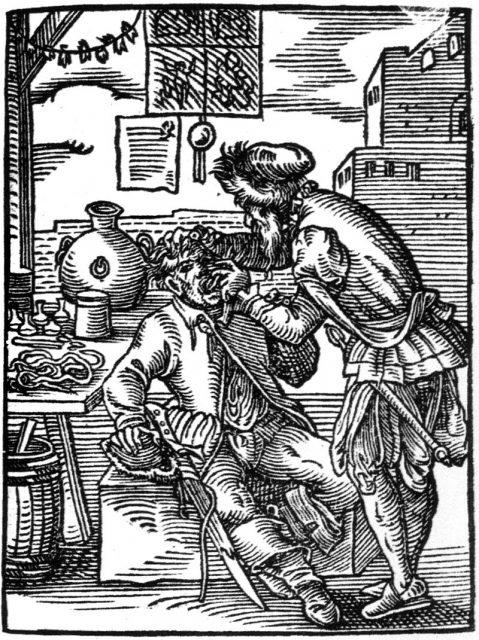
The Persians had a habit of pulling men from the backs of their horses by the beard, leaving the soldiers open for a killing blow.
According to The Barber’s History, when Alexander the Great observed this, he decreed that all men should be clean shaven to avoid a grisly end.
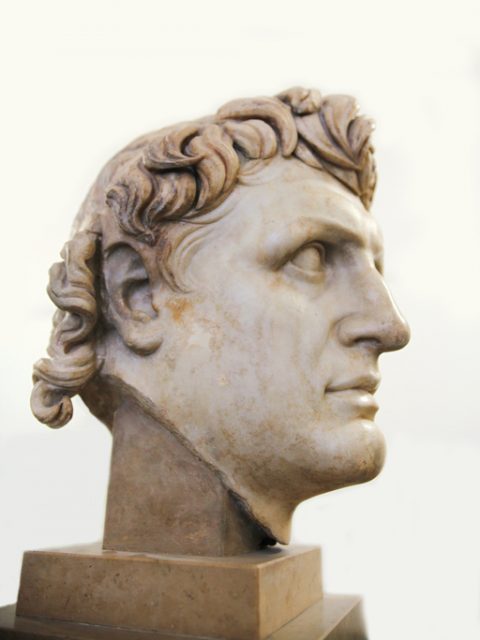
This news traveled swiftly back to the civilian population of Greece and the style caught on. Barbers were put to work making sure the men of Greece were clean shaven and fashionable.
Greek influence and trade would bring the idea of the barber to every shore they touched. The Romans kept their faces clean and their hair short as well — but, unlike the Egyptians, they viewed body hair as an attractive quality.
Through the conquests of the Roman Empire, the idea would spread to all the civilized world. But when the Germanic tribes, Visigoths, and Franks brought about the end of the Roman Empire, the beards and long hair they sported were brought back into fashion. This changed how the barber operated, but it would not be a simple transformation.
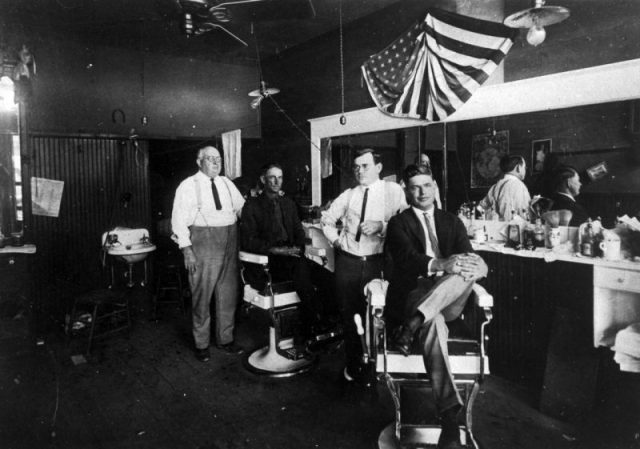
The fall of the Roman Empire, in 476, left a power vacuum across Europe. This would soon be filled by the Roman Catholic Church, which began to heavily impact the lives of every person in Europe. The duty of clergymen was not only to care for the souls of their congregations, but also for their bodies.
Often, monks would administer practices such as bloodletting and tooth extraction to attempt to fight diseases. This changed in the 1100s, when the papacy outlawed such practices by priests.
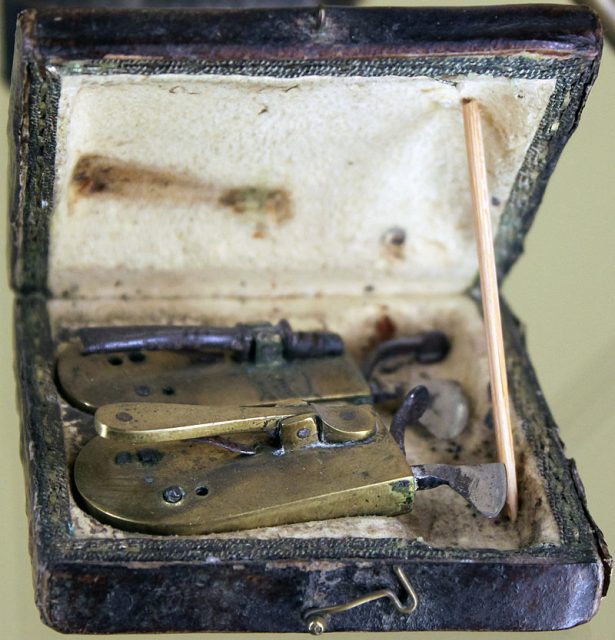
Many surgeons believed that bloodletting was required, but the task was beneath them. So barbers took up the mantle and started to provide these services.
Take a closer look with this video:
https://youtu.be/i-UqZ9xfg4s
This is where the barber’s pole comes in. In barber shops during the later part of the Middle Ages, barbers would place bowls of blood in the windows of the shop so that the mostly illiterate population would understand that bloodletting was a service that the barber provided.
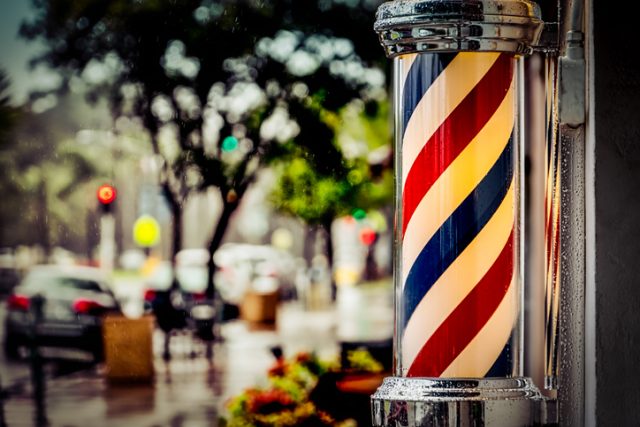
The practice of setting bowls of blood out is very unhygienic and thoroughly disgusting, however, and in 1307 laws were passed to stop the practice altogether. The barbers needed to find some way to advertise and the solution was incredibly clever.
The base of the iconic barber pole is the rod. When practicing bloodletting, the person receiving the treatment would take a wooden rod in their hand and squeeze it.
This would allow the veins to pop out of the arm, making it easy to find where to make an incision. That’s why the pole became the hallmark of the barber shop.
Read another story from us: Why Men Started Shaving Their Beards for Health Reasons
In The History of the Barber Pole, it states that “The red in a barber pole represents bloodletting, while the white was meant to signify the bandages used to wrap the wounds. The blue is said to represent the non-oxygenated blood in the veins. The downward spiral of the modern pole signifies the direction of the aortic flow of blood in the body.”
That’s why barbers have this on the outside of their shops — as a nod to the history of the profession.
